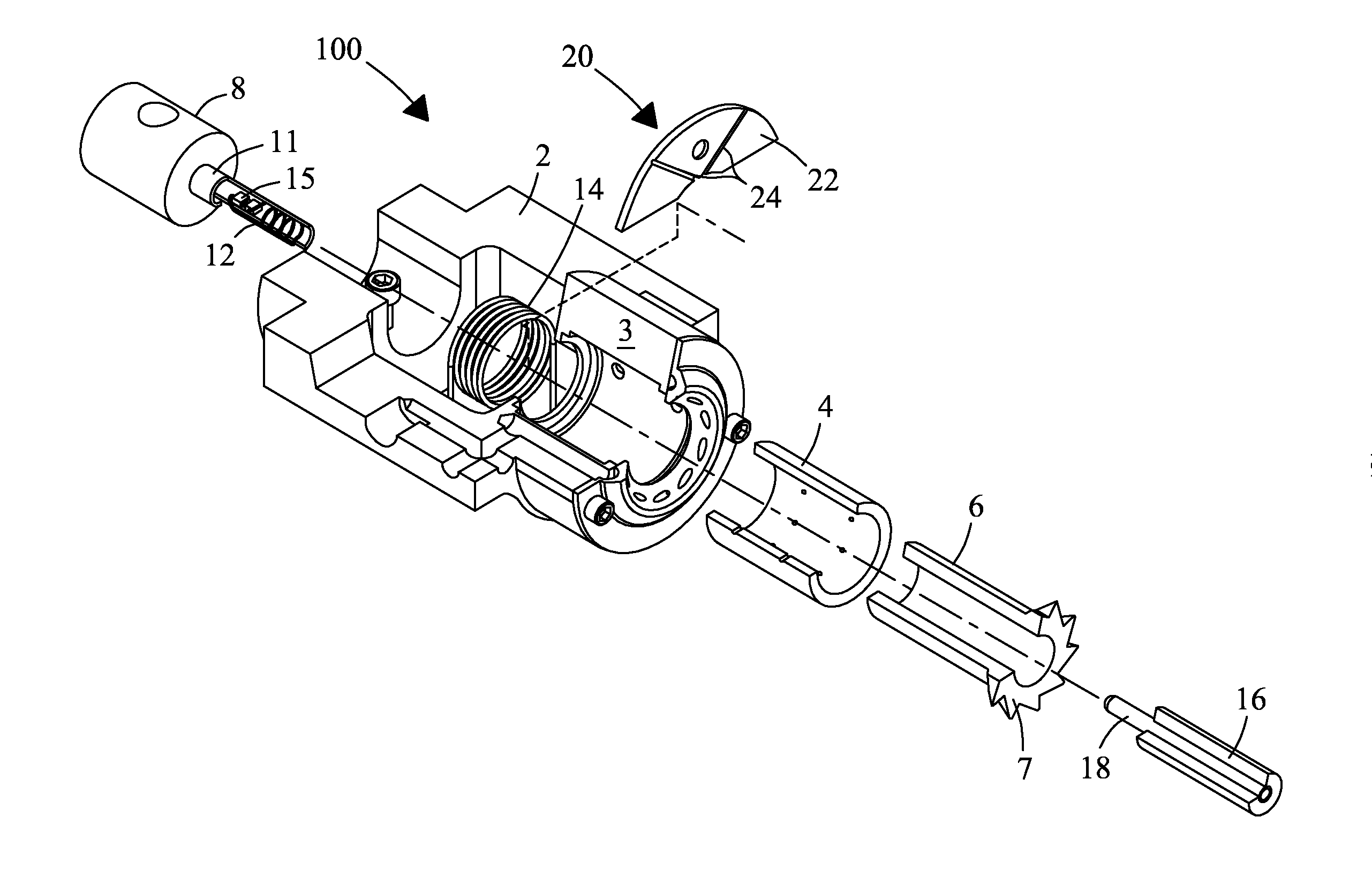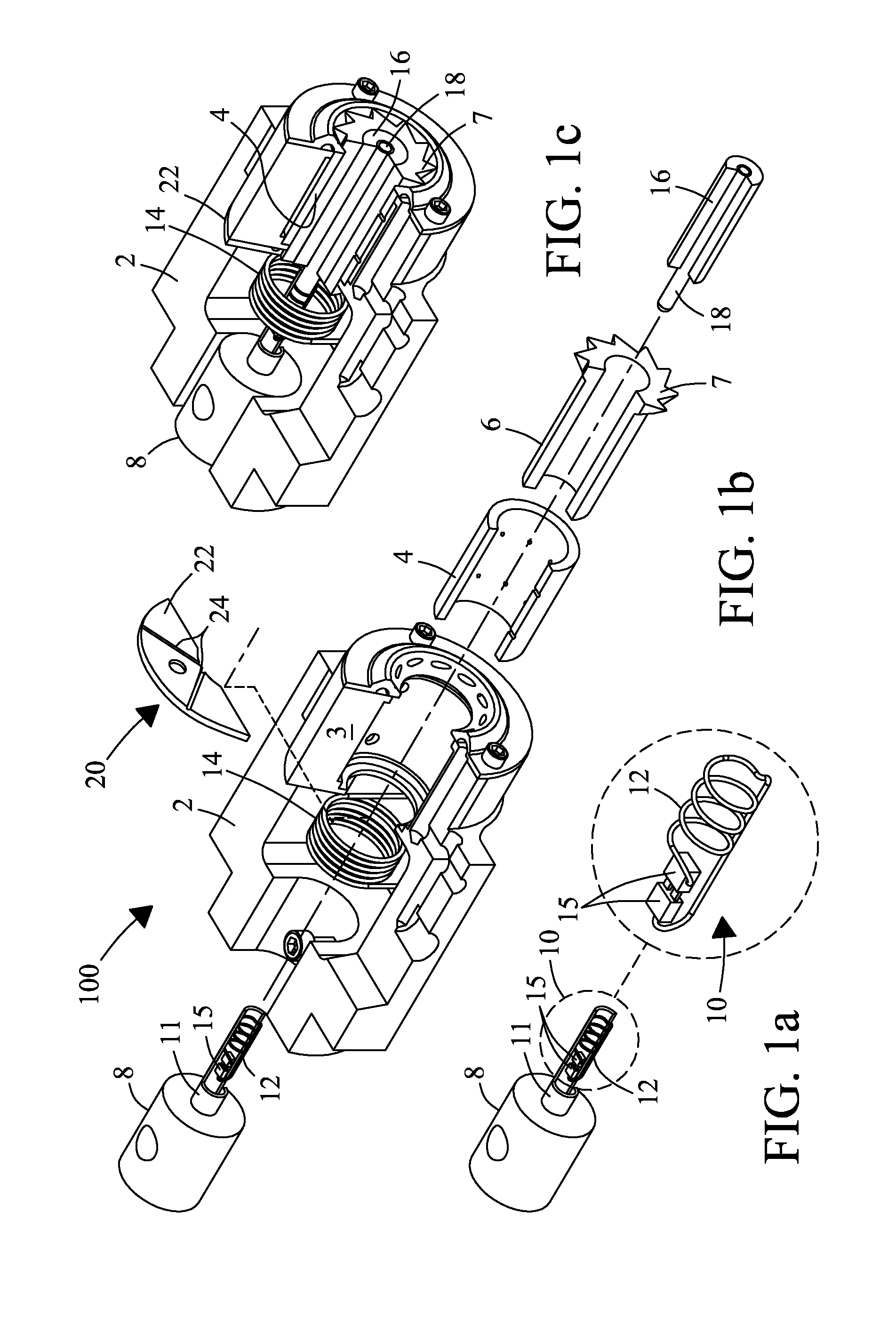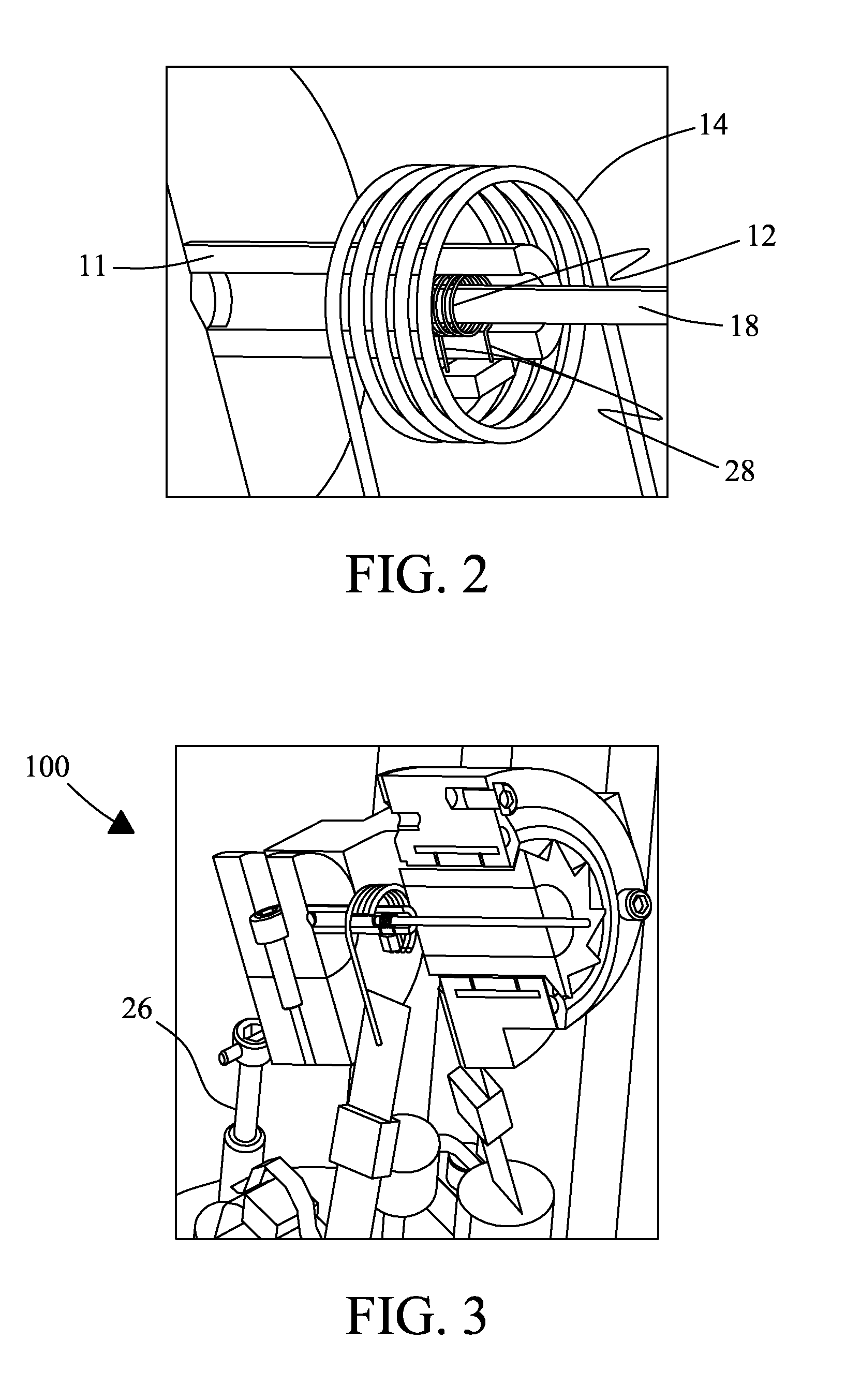Slow magic angle spinning nuclear magnetic resonance device and process for metabolomics profiling of tissues and biofluids
a metabolomics and biofluid technology, applied in the field of magic angle spinning (mas) spectroscopy, can solve the problems of limiting applications, poor resolution of sup>1/sup>h nmr spectra from tissues, and difficulty or inability to carry out continuous studies on single animals over a long period of time, and achieve the effect of improving the sample filling factor
- Summary
- Abstract
- Description
- Claims
- Application Information
AI Technical Summary
Benefits of technology
Problems solved by technology
Method used
Image
Examples
Embodiment Construction
[0030]A slow-MAS NMR probe and method are described that significantly enhance spectral resolution in excised tissues, organs, and live small specimens (e.g., bugs and insects) for metabolomics applications. The following description details a best mode of at least one embodiment of the slow-MAS NMR probe. It will be apparent from the description that various modifications, alterations, and substitutions may be made without departing from the scope of the invention as set forth in the claims listed hereafter, and that the invention also includes a variety of modifications and embodiments thereto. And, while the invention is susceptible of various modifications and alternative constructions, it should be understood, that there is no intention to limit the invention to the specific form disclosed, but, on the contrary, the invention is to cover all modifications, alternative constructions, and equivalents falling within the spirit and scope of the invention as defined in the claims. A...
PUM
 Login to View More
Login to View More Abstract
Description
Claims
Application Information
 Login to View More
Login to View More - R&D
- Intellectual Property
- Life Sciences
- Materials
- Tech Scout
- Unparalleled Data Quality
- Higher Quality Content
- 60% Fewer Hallucinations
Browse by: Latest US Patents, China's latest patents, Technical Efficacy Thesaurus, Application Domain, Technology Topic, Popular Technical Reports.
© 2025 PatSnap. All rights reserved.Legal|Privacy policy|Modern Slavery Act Transparency Statement|Sitemap|About US| Contact US: help@patsnap.com



